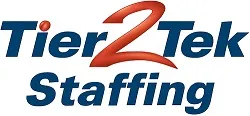Mulesoft Interview Questions with Answers

MuleSoft is a widely recognized integration platform that connects different systems, allowing for efficient data exchange and streamlined business processes. For hiring managers and job seekers alike, understanding the depth of MuleSoft capabilities is crucial. Below are carefully curated technical interview questions along with concise answers to help evaluate proficiency in MuleSoft. These questions cover various aspects of the platform, from basic concepts to more complex scenarios and best practices.
What is MuleSoft and its core components?
MuleSoft is an integration platform for connecting enterprise and SaaS applications in the cloud and on-premise. Core components include Anypoint Studio, Mule ESB, and CloudHub.
Explain the MuleSoft Anypoint Platform.
The Anypoint Platform is a suite for building and managing APIs and integrations. It includes tools like Anypoint Studio for design, Anypoint Exchange for sharing, and Anypoint Management Center for monitoring.
What is Mule ESB?
Mule ESB is an enterprise service bus that facilitates the integration of different applications by providing a bus-like architecture where applications can connect and exchange data.
Describe API-led connectivity.
API-led connectivity is a methodical way to connect data to applications through reusable and purposeful APIs. These APIs are developed with the intent to be shared across different projects.
How does DataWeave transform data?
DataWeave is a powerful language designed by MuleSoft for data transformation, enabling the conversion of data formats and mapping of data between APIs.
What are Message Sources in Mule?
Message sources trigger the execution of flows when they receive a new item, such as a new file in a directory or a new message on a queue.
Discuss the importance of Flow and Subflow.
A Flow is the primary construct for orchestrating data flows. A Subflow is a reusable sequence of processing steps that executes within the context of a flow.
What is a Connector in MuleSoft?
Connectors in MuleSoft are reusable components that allow you to connect to various services or systems.
Explain the purpose of the Mule Expression Language (MEL).
MEL is used to access and evaluate data within a Mule flow at runtime, allowing for dynamic data interaction.
What is the role of a Transformer in Mule?
Transformers convert message content between different data types or formats as it passes through a process.
How do you handle error handling in MuleSoft?
MuleSoft has robust error handling mechanisms including on-error scopes that manage both system and messaging exceptions.
Describe Batch Processing in Mule.
Batch processing is used for handling large volumes of records by splitting them into smaller manageable chunks that are processed independently.
What is a RAML and its purpose?
RAML (RESTful API Modeling Language) is used to describe RESTful APIs to provide a clearer structure and facilitate better maintenance and management.
How does MuleSoft support OAuth?
MuleSoft supports OAuth by providing out-of-the-box connectors like HTTP connector that facilitate the OAuth authentication process.
What are Web Services in Mule?
Web services in Mule can be either SOAP or RESTful services that allow for interoperability among different systems and platforms.
What is the significance of the scatter-gather pattern?
The scatter-gather pattern broadcasts a message to multiple targets and then aggregates the responses into a single message.
Discuss MuleSoft’s CloudHub.
CloudHub is MuleSoft’s cloud-based integration platform as a service (iPaaS) that allows developers to deploy integration applications without managing the underlying hardware.
Explain the VM transport in Mule.
VM transport allows Mule components to pass messages via in-memory queues, which helps to manage asynchronous message flows.
How do you secure APIs in MuleSoft?
APIs in MuleSoft can be secured using policies, OAuth, and other methods to ensure data protection and access control.
What is Anypoint Exchange?
Anypoint Exchange is a centralized hub for managing and sharing resources, such as APIs, connectors, templates, and documentation.
Describe the importance of API Manager.
API Manager is used to create, manage, and secure APIs. It provides features like API versioning and analytics.
How do transformations work in DataWeave?
Transformations in DataWeave involve mapping input data to output in a different format using DataWeave expressions and directives.
What is a Global Element in Mule?
Global elements are reusable configurations that can be defined globally and accessed across multiple flows and applications.
Explain the concept of a Mule Event.
A Mule Event is a data structure that carries a message as it is processed by a flow. It contains the message’s payload, attributes, and variables.
What are Policies in MuleSoft?
Policies are reusable components that can be applied to APIs to enforce certain behaviors like throttling, security, and operational policies.
How do you use MuleSoft for database integration?
MuleSoft can integrate with databases using database connectors that support operations like select, insert, update, and delete.
What is the role of a Message Processor?
Message processors manipulate, transform, route, or otherwise act upon a message within a flow.
Discuss the Caching Strategy in Mule.
Caching strategy involves storing and reusing frequently requested data to improve processing efficiency and reduce latency.
What is Anypoint Studio used for?
Anypoint Studio is an Eclipse-based IDE used to develop, test, and debug Mule applications.
How do you manage environments in MuleSoft?
Environments in MuleSoft are managed through Anypoint Platform, which allows separation of development, testing, and production environments for APIs and integrations.
Common Technologies Used in MuleSoft

MuleSoft, as an integration platform, utilizes a variety of technologies to facilitate seamless connectivity and data exchange. Here are some of the key technologies typically associated with MuleSoft:
- Anypoint Studio: MuleSoft’s graphical design environment used for designing and testing Mule applications.
- Mule ESB: The core engine of the MuleSoft platform, which provides the bus-like infrastructure to support integration.
- DataWeave: A data transformation tool specific to MuleSoft that allows for easy data mapping and transformation.
- CloudHub: A cloud-based integration service offered by MuleSoft to deploy and manage applications in the cloud.
- API Manager: A component of Anypoint Platform that helps create, manage, and secure APIs.
- Anypoint Connectors: Pre-built connectors that allow for easy integration with a wide range of applications, data sources, and APIs.
- RAML (RESTful API Modeling Language): Used to provide a structured approach to API design and management.
- Anypoint MQ: A fully integrated multi-tenant, cloud messaging service for delivering advanced asynchronous messaging capabilities.
- Anypoint Exchange: A repository for sharing assets, templates, and best practices among the MuleSoft community.
- Anypoint Security: Features tools to manage security and compliance for transactions passing through APIs.
Key Expertise Areas in MuleSoft
MuleSoft requires a specific set of expertise areas to effectively utilize its comprehensive integration capabilities. Professionals working with MuleSoft typically need to be proficient in the following areas:
- API Development and Management: Expertise in developing, managing, and maintaining APIs using MuleSoft’s Anypoint Platform.
- Integration Architecture: Knowledge of designing and implementing robust integration solutions using MuleSoft.
- Data Transformation: Skills in using DataWeave for mapping and transforming data between different formats and systems.
- Enterprise Service Bus (ESB): Understanding of how to leverage Mule ESB for integrating various applications within a business ecosystem.
- Cloud Solutions: Familiarity with deploying and managing applications on CloudHub, MuleSoft’s cloud integration platform.
- Security and Compliance: Proficiency in applying security measures, managing secure access, and ensuring compliance within MuleSoft deployments.
- Performance Tuning and Optimization: Ability to optimize Mule applications for performance, including tuning and troubleshooting.
- DevOps Practices: Experience in applying DevOps methodologies within MuleSoft projects, including continuous integration and continuous deployment (CI/CD).
- Problem Solving: Strong analytical and problem-solving skills to troubleshoot and resolve integration issues.
- Communication and Collaboration: Effective communication skills for working across teams and with stakeholders to design and implement integration solutions.
Need to Hire MuleSoft Experts?

At Tier2Tek Staffing, we specialize in connecting top-tier MuleSoft professionals with companies that need their expertise. Let us help you find the right talent to drive your integration projects forward.
